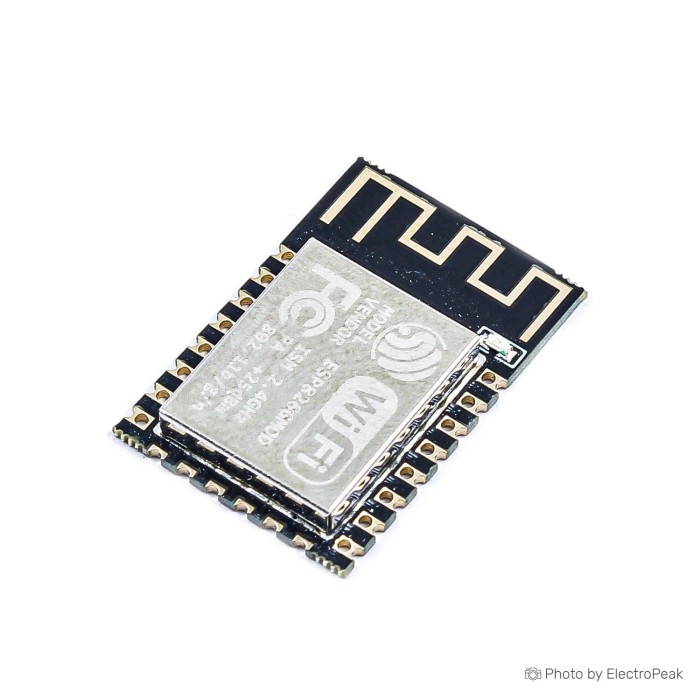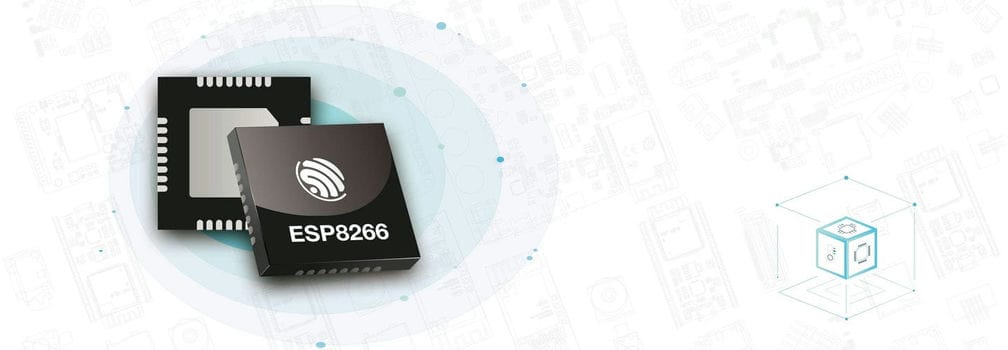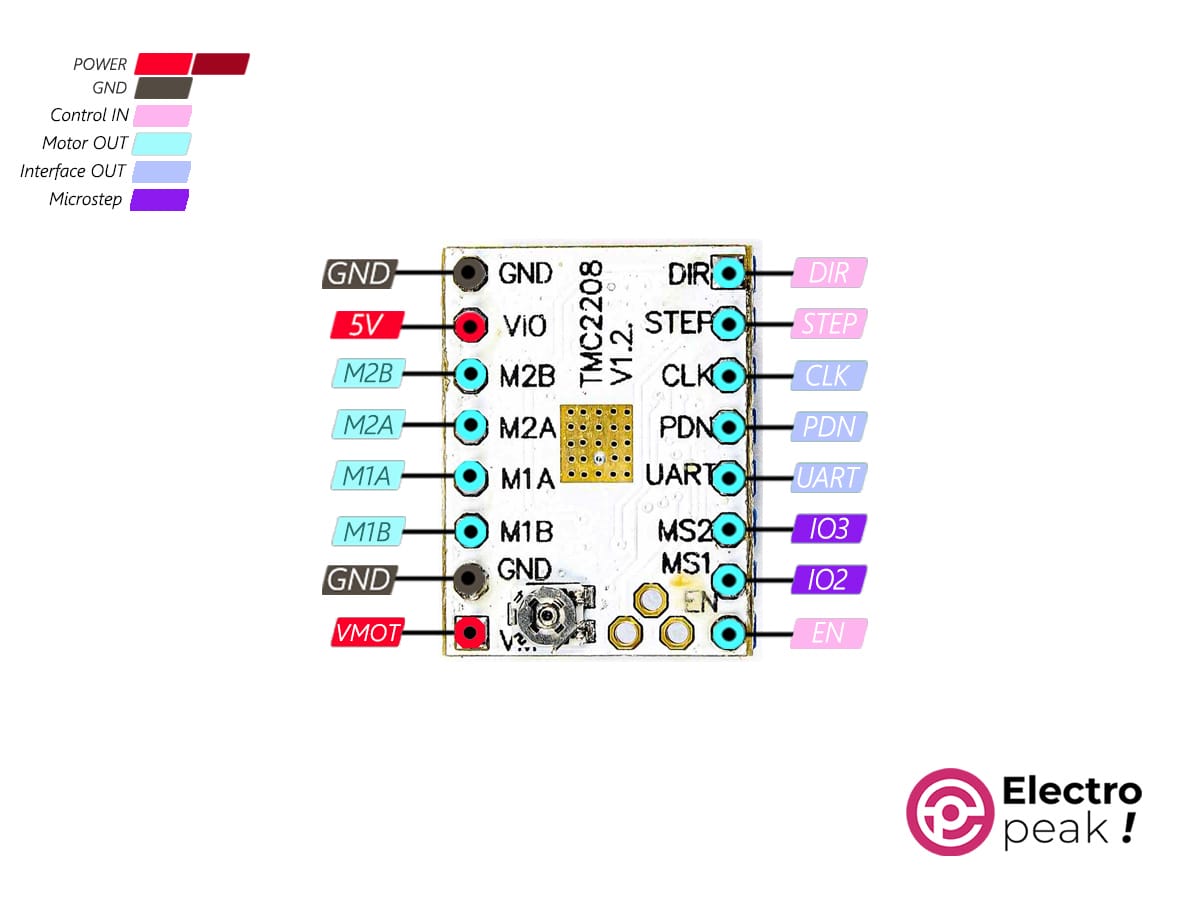Code can be uploaded to the ESP-12F module using a USB-to-Serial converter (e.g., CH340 or CP2102). Connect the converter to the module's RX and TX pins, connect GPIO0 to GND, select the correct COM port and board in the Arduino IDE, and upload your code.
ESP-12F ESP8266 Wi-Fi Module
Volume discounts:
- +100 6 % $1.1800
- +300 8 % $1.1500
- +500 10 % $1.1300
- +1000 12 % $1.1000
-
ESP-12F ESP8266 Wi-Fi Module
COM-03-023 -
Ai Thinker ESP-12F ESP8266 WiFi Module
COM-03-063 -
ESP-07S ESP8266 Wi-Fi Module
COM-03-054 -
ESP-07 ESP8266 Wi-Fi Module - IPX Antenna
COM-03-053 -
ESP-12N ESP8266 Wi-Fi Development Board
COM-03-038 -
Ai Thinker ESP-12S ESP8266 WiFi Module
COM-03-061 -
ESP-12S ESP8266 Wi-Fi Module
COM-03-046 -
ESP-12E ESP8266 Wi-Fi Module
COM-03-019
-
ESP-01/ESP12/ESP32 Universal Downloader Burning Fixture Test Board Programmer$4.9500
-
ESP8266 Proto Adapter Board for ESP-07, ESP-08, ESP-12$0.1200
 ESP-12E ESP8266 Wi-Fi Module
Previous
ESP-12E ESP8266 Wi-Fi Module
Previous

The ESP-12F ESP8266 is a compact and versatile Wi-Fi module designed for embedded applications and Internet of Things (IoT) projects. Based on the ESP8266 chipset, the ESP-12F provides seamless Wi-Fi connectivity, making it an excellent choice for devices that require wireless communication capabilities. With a compact form factor and integrated features, the ESP-12F is widely used by developers, hobbyists, and manufacturers to enable Wi-Fi connectivity in a variety of electronic projects. Its flexibility, low cost, and community support make the ESP-12F a popular choice for those looking to integrate wireless capabilities into their designs.
Its compatibility with the Arduino IDE and a broad range of libraries makes it accessible to both beginners and experienced developers, providing a seamless and cost-effective solution for wireless communication and IoT development.
Specifications of ESP-12F ESP8266 Wi-Fi Module
- Microcontroller: ESP8266EX
- CPU Frequency: Up to 80 MHz
- Flash Memory: Typically 4 MB (may vary depending on module variant)
- Wi-Fi:11 b/g/n (2.4 GHz)
- Communication: UART, SPI, I2C
- GPIO Pins: Typically 11 digital GPIO pins (may vary depending on module variant)
- Analog Input Pins: Typically 1 analog input pin (may vary depending on module variant)
- PWM (Pulse Width Modulation) Output: Available on certain pins
- Operating Voltage: 3V
- Size: 24mm x 16mm (approximately)
Key features of ESP-12F ESP8266 Wi-Fi Module
- Integrated Wi-Fi: Equipped with built-in Wi-Fi capabilities, the ESP-12F module enables wireless communication for a variety of applications, from IoT to remote control systems.
- Compact Size: The module's small form factor allows for easy integration into projects with space constraints.
- Extended Connectivity: The module features UART, SPI, and I2C interfaces, providing flexible communication options. It also offers PWM and ADC capabilities for various application requirements.
- Arduino IDE Compatibility: Supports programming using the Arduino Integrated Development Environment (IDE). This compatibility simplifies the development process, making it accessible to a wide range of developers familiar with the Arduino platform.
- GPIO Pins: Provides General Purpose Input/Output (GPIO) pins, allowing for versatile interfacing with sensors, actuators, and other electronic components. These pins support digital input/output, analog input, PWM, and other functionalities.
Pinout of ESP-12F ESP8266 Wi-Fi Module
In picture below, you can see the pinout of ESP-12F module. Each of the pins has a special function. For more details about the pinout of this module and other ESP8266 based modules, you can read this page.
Power and Reset:
- VCC: External 3.3V power supply.
- GND: Ground.
- RST: Reset program running now
- EN: Enables the chip
- FLASH: Boot into the flash mode
GPIO Pins:
17 multipurpose GPIO pins
Peripheral ports :
I2C, UART, SPI(HSPI & SSPI)
Caution
Operate the module within its specified voltage range (3.3V) to prevent damage. When interfacing with components or devices requiring different voltage levels, use appropriate level shifters like this. Handle the module and components carefully to avoid static discharge and physical damage.
FAQs
How do I upload code to the ESP-12F module?
What is the range of the ESP-12F's Wi-Fi connectivity?
The range depends on factors like environmental conditions and antenna configuration. The onboard antenna may have limited range up to 20m.
Can I use the ESP-12F for battery-operated projects?
Yes, the ESP-12F is designed for low power consumption, making it suitable for battery-operated projects. Implement power-saving techniques to optimize battery life.
Does the ESP-12F support secure Wi-Fi connections?
Yes, the ESP-12F supports various Wi-Fi security protocols, including WEP, WPA/WPA2 PSK, and WPA/WPA2 Enterprise, ensuring secure wireless communication.
What programming languages are supported for the ESP-12F?
The ESP-12F can be programmed using the Arduino programming language through the Arduino IDE. It also supports Lua scripting, providing flexibility in coding.
Is the ESP-12F compatible with NodeMCU firmware?
Yes, the ESP-12F is compatible with the NodeMCU firmware, which offers additional features and Lua scripting support.







Please complete your information below to login.
Sign In
Create New Account